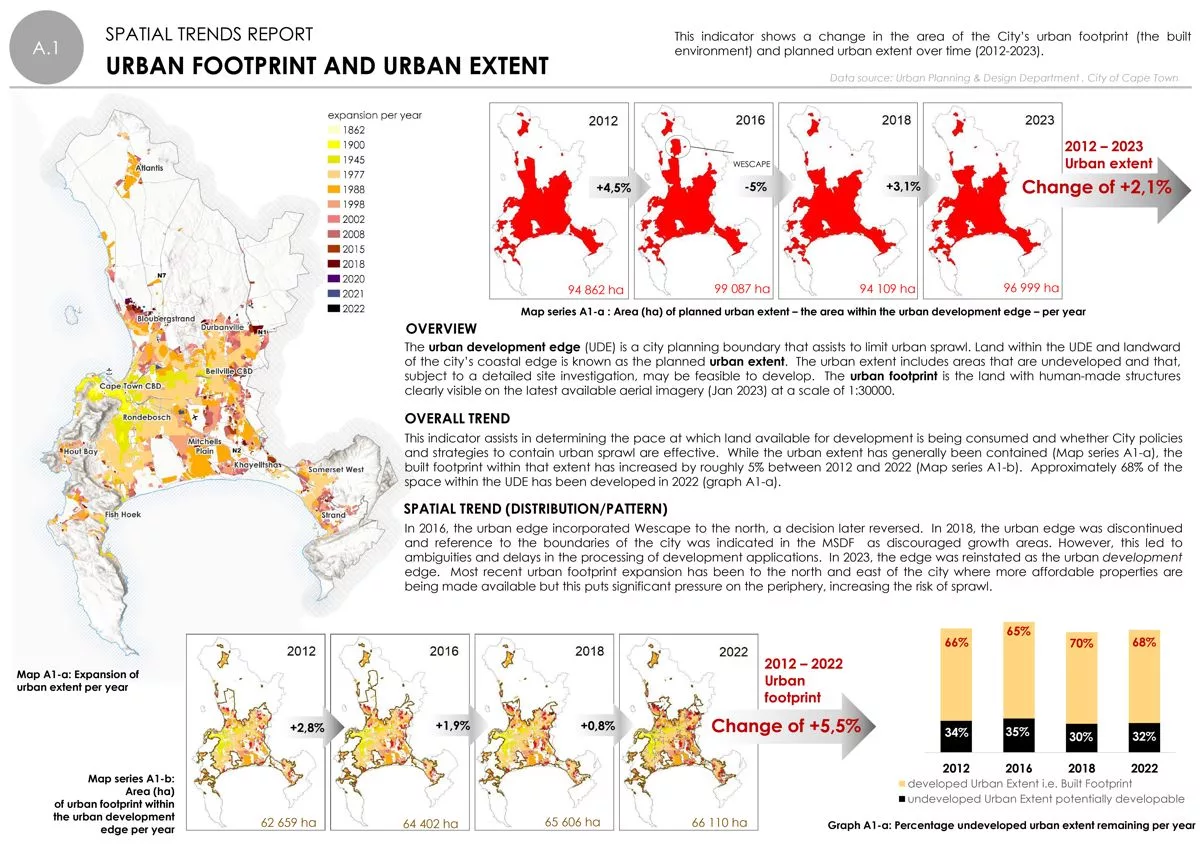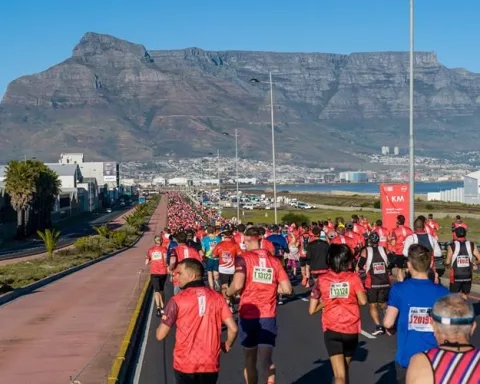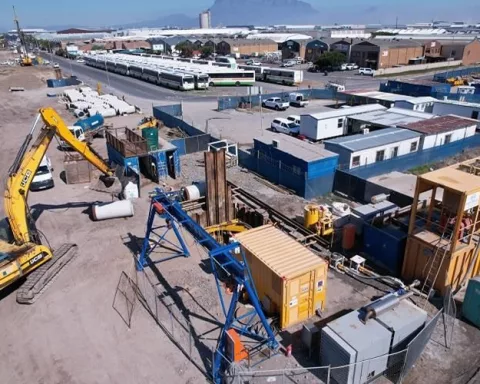Cape Town’s Municipal Spatial Development Framework is a navigational tool that guides the city’s growth and balances urban expansion with natural preservation. The city’s planners have carefully observed spatial patterns, densification trends, and mixed-use zones, while conserving green spaces and agricultural treasures. With projections of a population that might double by 2040, Cape Town is gearing up for a future that honors its history while embracing the vibrancy of a bustling city. The report serves as a kaleidoscope, offering a view into the evolving spectrum of Cape Town’s developmental landscape.
What is the Municipal Spatial Development Framework in Cape Town?
The Municipal Spatial Development Framework (MSDF) in Cape Town is a navigational tool for the city’s growth. The Urban Planning and Design Department utilizes spatial strategies and policies to balance urban expansion and natural preservation. The MSDF guides the city’s growth with intent and foresight, blending human habitation with natural retreats and agricultural richness. The updated MSDF and District Spatial Development Frameworks are set out to forge a city that seamlessly blends human habitation with natural retreats.
Cape Town, a city celebrated for its stunning landscapes, simultaneously weaves a story of purposeful advancement. Each year, changes to the skyline reflect a narrative of progress and preservation. A city report recently published unveils the city’s transformative journey over the last decade. This tale is one of careful balance, where urban expansion coexists with the natural allure that defines the region.
Crafting the Urban Canvas
At the core of this evolution is the Urban Planning and Design Department’s dedication. They have dedicatedly worked on spatial strategies and policies to guide the city’s growth with intent and foresight. The updated Municipal Spatial Development Framework and the eight District Spatial Development Frameworks stand as navigational tools for this progression. These strategic blueprints are set out to forge a city that seamlessly blends human habitation with pockets of natural retreats and agricultural richness.
The city’s planners have tirelessly sifted through extensive data, identifying spatial patterns that shape their decisions. Their careful observations of densification trends and the emergence of mixed-use zones are meticulously documented in the report. As Cape Town expands its built environment, it simultaneously conserves its green spaces and agricultural treasures. This effort turns the city into a vividly illustrated book on urban development.
Sustainable Growth Measured
The investigation reveals a remarkable expansion of Cape Town’s built environment—an increase of 3,451 hectares or 5% between 2012 and 2022. The city showcases its agility in accommodating its burgeoning population, all the while safeguarding its environmental responsibilities. The report is not only a historic ledger but also a guiding light for future policymaking, anchored in the insights of past trends.
Alderman Andrews, a pivotal figure in the city’s urban narrative, encourages engagement with the report’s findings. He emphasizes the report’s role as a resource for everyone—residents, urban planners, scholars, and investors. Designed for accessibility, it features visual data and maps for straightforward understanding. It offers a blend of theoretical and hands-on insights, laying the foundation for timely and effective urban interventions. With projections of a population that might double by 2040, Cape Town is gearing up for a future that honors its history while embracing the vibrancy of a bustling city.
A Chronicle of Evolution and Aspiration
The city’s transformation is accentuated by public investments and initiatives aimed at revitalizing and improving urban areas. This reflects an ongoing story of transformation. The report tracks how public capital investment correlates with spatially targeted initiatives, a testament to Cape Town’s dedication to balanced and enduring development.
The Spatial Trends and Implementation Tracking Report transcends mere data compilation. It embodies Cape Town’s dynamic stance on urban challenges, illustrating its commitment to a harmonious blend of human construction and nature. Looking forward, this city is ready to sculpt a future that respects its heritage and eagerly anticipates a prosperous urban future.
Indeed, the report serves as a kaleidoscope, offering a view into the evolving spectrum of Cape Town’s developmental landscape. Amidst historical and creative currents, the report paints a picture of a city devoted to progressive growth while preserving its rich cultural identity. This narrative doesn’t depict a city at a crossroads but one journeying forth with clarity of vision. With lessons drawn from the past, it confidently approaches tomorrow’s challenges. Cape Town’s development saga is a tale rich with resilience, innovation, and foresight—a story that continues to evolve with each strategic decision and each new addition to its horizon.
1. What is the Municipal Spatial Development Framework in Cape Town?
The Municipal Spatial Development Framework (MSDF) in Cape Town is a navigational tool for the city’s growth. The Urban Planning and Design Department utilizes spatial strategies and policies to balance urban expansion and natural preservation. The MSDF guides the city’s growth with intent and foresight, blending human habitation with natural retreats and agricultural richness.
2. What is the purpose of the District Spatial Development Frameworks in Cape Town?
The District Spatial Development Frameworks in Cape Town are navigational tools for the city’s progression. They are set out to forge a city that seamlessly blends human habitation with pockets of natural retreats and agricultural richness. These frameworks guide the city’s growth with intent and foresight.
3. How has Cape Town balanced urban expansion with natural preservation?
Cape Town has balanced urban expansion with natural preservation by utilizing spatial strategies and policies. The city’s planners have carefully observed spatial patterns, densification trends, and mixed-use zones, while conserving green spaces and agricultural treasures.
4. How much has Cape Town’s built environment expanded between 2012 and 2022?
Cape Town’s built environment has expanded by 3,451 hectares or 5% between 2012 and 2022, showcasing its agility in accommodating its burgeoning population while safeguarding its environmental responsibilities.
5. What is the role of the report on Cape Town’s Spatial Trends and Implementation Tracking?
The report on Cape Town’s Spatial Trends and Implementation Tracking serves as a historic ledger and a guiding light for future policymaking, anchored in the insights of past trends. It offers a blend of theoretical and hands-on insights, laying the foundation for timely and effective urban interventions.
6. Who is encouraged to engage with the report’s findings?
The report’s findings are encouraged to be engaged with by everyone, including residents, urban planners, scholars, and investors. Designed for accessibility, it features visual data and maps for straightforward understanding.
7. How does Cape Town approach urban challenges?
Cape Town approaches urban challenges with a dynamic stance, illustrating its commitment to a harmonious blend of human construction and nature. It aims to sculpt a future that respects its heritage and eagerly anticipates a prosperous urban future.
8. What is the narrative of Cape Town’s development saga?
Cape Town’s development saga is a tale rich with resilience, innovation, and foresight—a story that continues to evolve with each strategic decision and each new addition to its horizon. Amidst historical and creative currents, the report paints a picture of a city devoted to progressive growth while preserving its rich cultural identity.








